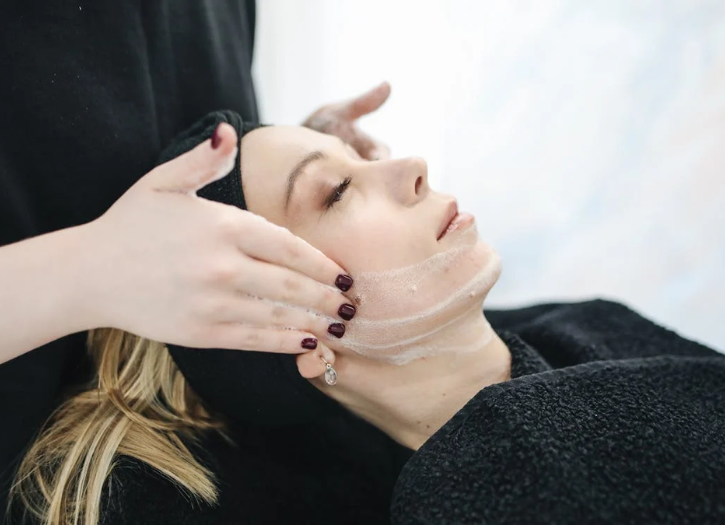Hyperpigmentation is a widely common skin condition characterised by certain darkened patches or spots on the skin that are caused by the overproduction of melanin. This condition affects the skin’s health by possibly indicating deeper medical conditions or damage to the skin and, in most cases, brings a lack of uniformity in skin tone. It can have a tremendous psychological effect as well because the appearance of our skin affects personal confidence and social perception.
Hyperpigmentation thus becomes multivariable in impact, requiring a sophisticated understanding both of skin biology and psychological well-being. Early recognition and intervention may mitigate its effects before they worsen. Understanding the different modalities of treatment and preventive measures is important in attacking and managing this common condition.
Types of Hyperpigmentation
Hyperpigmentation can take diverse forms and be induced by multiple factors. Melasma is seen as large symmetrical patches of darkened skin on the face, mostly caused by a change in hormonal profiles during pregnancy or through contraceptive use. Liver spots, also known as sunspots or solar lentigines, result from long-term exposure to the sun. It is common to develop them in areas of the body, such as the face, hands, and arms, which are quite often exposed to sunlight. Post-inflammatory hyperpigmentation is a result of skin injury or inflammation, including cuts, burns, or even acne. When the injuries have healed, dark spots on the skin remain.
Each type evidently has different causes. That’s why incorporating targeted treatment into your skincare routine is warranted. The different types of hyperpigmentation are identified according to the specific sites of manifestations on the body in addition to the visual appearances, and these can be very useful in determining their aetiology. Understanding these types might help make proper choices for treatment strategies, which is a must for management.
General Treatment Options
Hyperpigmentation products are usually a mix of other brighteners of the skin and strong inhibitors of melanin production, coupled with skin cellular exfoliating agents. Such products will contain active ingredients like Retinoids and Antioxidants. Retinoids are Vitamin A derivatives related to skin renewal, fine texture, and even skin tone. Vitamin C and Niacinamide are Antioxidants that make the skin even lighter by reducing the amount of melanin produced and protecting the skin from free radicals.
Besides the inclusion of such ingredients, the application methods and timing of application can go a long way in making such products very effective. Patient education in these practices is very important for the best outcomes. With ingredients incorporated in such products, skin brightening products can greatly reduce the visibility of dark spots, making the skin tone look even. These products need to be used regularly and consistently within the setting of a good skin-care routine to maintain a clear, radiant skin tone.
Advanced Treatment Techniques
Advanced dermatologic treatments offer very strong solutions to the problem of persistent or severe hyperpigmentation. They involve laser therapy, chemical peels, and microneedling, among others, developed to act against overactive melanocytes nestled within deep layers of the skin. Laser treatments encourage the degradation of melanin deposits in the skin by strong, focused light, hence resulting in cleaner-looking skin. Chemical peels are made of solutions that are applied to the skin to cause the old skin to slough off, hence encouraging the growth of new, pigmentation-free skin. On the other hand, microneedling involves the use of fine needles to create tiny punctures in the skin, thus invoking a healing response that works to reduce the appearance of dark spots over time.
Though very effective, these treatments often take a few sessions before optimal results are achieved. Realistic goals should be explained to the patients regarding the duration and intensity of the treatments to achieve a high level of patient satisfaction. Each one of the methods should be carefully considered and followed by professionals since they are invasive and present a high chance of risk. Proper consultation with a certified dermatologist is necessary to evaluate the type of skin, the level of hyperpigmentation, and overall health to provide the most suitable recovery plan. Professional advice makes sure the treatment not only works to its optimum but is also safe and healthy for the skin.
Preventative Measures and Daily Care
Sometimes, it is as important to prevent hyperpigmentation as it is to treat it. One of the most important prevention techniques involves the use of sunscreen, as ultraviolet rays can cause serious worsening of pigmented spots. In this regard, specialists recommend using broad-spectrum sunscreen with an SPF of at least 30 daily for protection against UVA and UVB radiation, regardless of weather conditions. Besides sun protection, a balanced skincare routine in all ways includes hydration and protective antioxidants. Vitamin E and green tea in a product protect against the environment and support skin health.
Most importantly, however, the occurrence of hyperpigmentation can be further reduced by avoiding the sun at its peak hours. Regular consults with a dermatologist would also help to diagnose skin problems at the initial level and manage them efficiently. Proactive skin health includes a self-assessment of the skin, knowing your skincare ingredients, and switching up when needed. This means consistency with the application of products that nourish and protect the skin, and it goes a long way toward improving and preventing the emergence of new pigment issues.
Wrapping Up
Understanding and dealing with hyperpigmentation is significant in the course of maintaining healthy skin. This guideline has touched on general and advanced treatment options for lightening dark spots and evening out skin tone. With each passing day, there are more and more advances in the field of dermatological science, and with them, newer and more effective treatments are bound to be discovered. Being aware of these advancements gives greater chances to more and more individuals to manage their skin conditions successfully.







Add Comment
You must be logged in to post a comment.